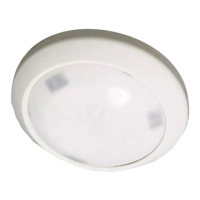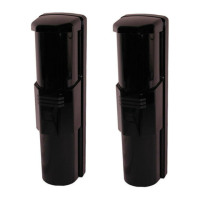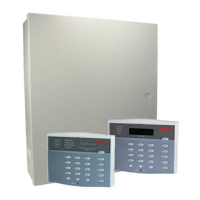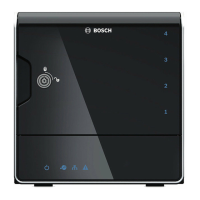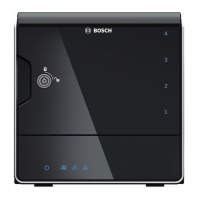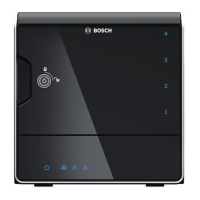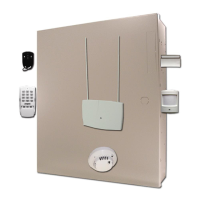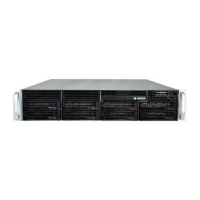Do you have a question about the Bosch D220 and is the answer not in the manual?
Provides an overview of the security system's purpose and keypad functionality for users.
Defines a "point" as a detection device and explains how the keypad displays their status.
Explains the term "faulted" for points (e.g., open door/window) and how the keypad indicates it.
Differentiates between two basic types of points: Controlled and 24-hour.
Describes the function of turning on all controlled points, including interior and exterior devices.
Explains turning on a portion of the system's controlled points, often based on company programming.
Details 24-hour points that monitor fire detection devices and cannot be turned off.
Describes 24-hour points that are always active and not user-turnable, covering non-fire events.
Explains that numeric keys (0-9) perform different functions, referencing other guide sections for details.
Details the use of special keys like CLEAR, A, B, C, and * for system control and functions.
Details the meaning of various keypad lights (On, No Delay, 1-8, All, Part, OK) for system status.
Explains different keypad tones like Fire Alarm, Burglary Alarm, Trouble Tone, and OK Tone.
Outlines the four types of system events (Fire Alarms, Burglary Alarms, Fire Troubles, Non-Fire Troubles) by priority.
Details how to silence an alarm by entering a passcode before the system reports to the alarm company.
Describes the process of turning off the security system using a personal passcode after entering through a designated door.
Explains how to arm the entire system, including the exit delay countdown before activation.
Details activating the entire system instantly without entry or exit delays, useful when staying home.
Describes arming only a portion of the system, leaving other points deactivated, with exit delay.
Explains activating a part of the system instantly without delays, suitable for specific needs.
Details how to exclude specific points from being armed when turning the system on.
Guides users on how to check which points were in alarm after an event has been silenced.
Explains how to reset the system after an alarm and clear alarm memory, including a 20-second process.
Allows users to set different audible responses when a watched point is faulted (e.g., door opened).
Guides users on selecting specific points (excluding fire points) to be monitored for faults.
Explains how to identify system troubles using keypad lights and tones, and what each indicator means.
Details the procedure for changing one's personal passcode without needing the alarm company.
Describes temporarily deactivating protection on an entry door while the system is armed, for quick exits.
Explains allowing exit through a specific door when the system is armed with No Delay, without causing an alarm.
Provides instructions on how to silence the trouble tone using the CLEAR key and check for causes.
Illustrates how to view the type (Owner, User, One-Time) assigned to each user's passcode.
Guides Owner-type users on changing the passcode type (Owner, User, One-Time) for system users.
Details how Owner-type users can change the actual passcodes for other system users.
Explains how to perform a system test to ensure proper operation, requiring owner passcode.
Lists limitations of security systems, including environmental factors, bypass methods, and phone line issues.
Provides guidance on minimizing fire hazards, installing alarms, and practicing escape plans.
Defines key terms and concepts used throughout the security system user's guide.
Instructs on the proper method for cleaning the keypad using household glass cleaner and a cloth.
Provides an overview of the security system's purpose and keypad functionality for users.
Defines a "point" as a detection device and explains how the keypad displays their status.
Explains the term "faulted" for points (e.g., open door/window) and how the keypad indicates it.
Differentiates between two basic types of points: Controlled and 24-hour.
Describes the function of turning on all controlled points, including interior and exterior devices.
Explains turning on a portion of the system's controlled points, often based on company programming.
Details 24-hour points that monitor fire detection devices and cannot be turned off.
Describes 24-hour points that are always active and not user-turnable, covering non-fire events.
Explains that numeric keys (0-9) perform different functions, referencing other guide sections for details.
Details the use of special keys like CLEAR, A, B, C, and * for system control and functions.
Details the meaning of various keypad lights (On, No Delay, 1-8, All, Part, OK) for system status.
Explains different keypad tones like Fire Alarm, Burglary Alarm, Trouble Tone, and OK Tone.
Outlines the four types of system events (Fire Alarms, Burglary Alarms, Fire Troubles, Non-Fire Troubles) by priority.
Details how to silence an alarm by entering a passcode before the system reports to the alarm company.
Describes the process of turning off the security system using a personal passcode after entering through a designated door.
Explains how to arm the entire system, including the exit delay countdown before activation.
Details activating the entire system instantly without entry or exit delays, useful when staying home.
Describes arming only a portion of the system, leaving other points deactivated, with exit delay.
Explains activating a part of the system instantly without delays, suitable for specific needs.
Details how to exclude specific points from being armed when turning the system on.
Guides users on how to check which points were in alarm after an event has been silenced.
Explains how to reset the system after an alarm and clear alarm memory, including a 20-second process.
Allows users to set different audible responses when a watched point is faulted (e.g., door opened).
Guides users on selecting specific points (excluding fire points) to be monitored for faults.
Explains how to identify system troubles using keypad lights and tones, and what each indicator means.
Details the procedure for changing one's personal passcode without needing the alarm company.
Describes temporarily deactivating protection on an entry door while the system is armed, for quick exits.
Explains allowing exit through a specific door when the system is armed with No Delay, without causing an alarm.
Provides instructions on how to silence the trouble tone using the CLEAR key and check for causes.
Illustrates how to view the type (Owner, User, One-Time) assigned to each user's passcode.
Guides Owner-type users on changing the passcode type (Owner, User, One-Time) for system users.
Details how Owner-type users can change the actual passcodes for other system users.
Explains how to perform a system test to ensure proper operation, requiring owner passcode.
Lists limitations of security systems, including environmental factors, bypass methods, and phone line issues.
Provides guidance on minimizing fire hazards, installing alarms, and practicing escape plans.
Defines key terms and concepts used throughout the security system user's guide.
Instructs on the proper method for cleaning the keypad using household glass cleaner and a cloth.
| Brand | Bosch |
|---|---|
| Model | D220 |
| Category | Security System |
| Language | English |
